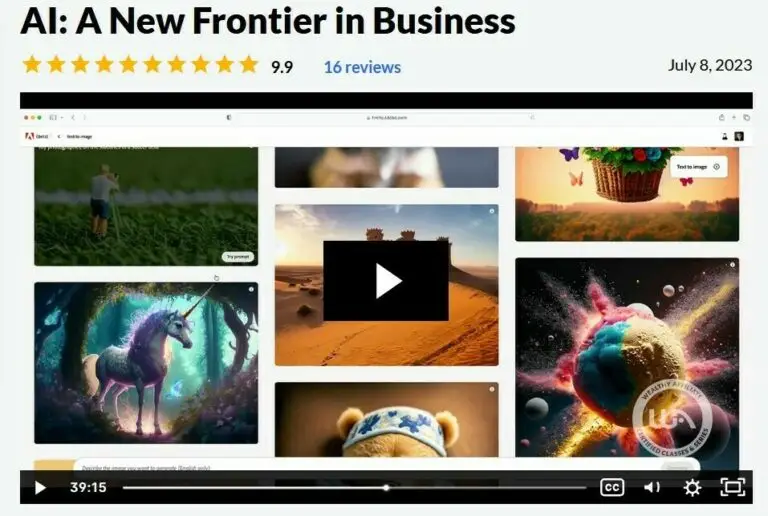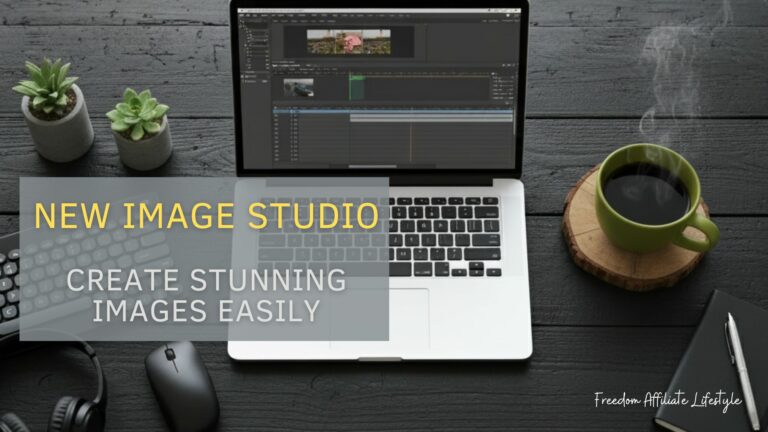You've likely seen the buzz around artificial intelligence and how it's shaking up creative industries. From churning out marketing copy to generating stunning visuals, AI's role is becoming hard to ignore. I personally think that having a clear understanding of AI's capabilities is extremely important before integrating it into your creative processes.
There's no doubt that AI is reinventing content creation. These intelligent systems can analyze vast amounts of data to produce content quickly and efficiently. They learn from patterns and feedback, making them an asset for anyone looking to streamline complex creative tasks.
More importantly, these tools are designed to assist human creativity, not replace it.
To decide if AI can be of benefit, ask yourself a few questions.
- Do you need a fresh perspective on content?
- Are repetitive tasks eating up creative time?
If the answer is yes, then AI could likely offer the support you need.
Selecting the Right AI Tool for Your Needs
There is a diverse array of tools at your disposal when it comes to AI content generation. Selecting the right tool for your specific needs is the easiest way to use these tools effectively.
Start by exploring the different AI platforms available. Whether it's text-based tools like ChatGPT or image-creating marvels like DALL-E, each platform has its unique strengths and applications.

Consider how an AI's capabilities align with the goals you have for your content. If you're aiming for written material, does the AI excel in linguistic nuances and tone? For visual content, does the tool produce images that are both striking and relevant?
It is also important to factor in the costs and accessibility of AI tools. Some tools offer free tiers with limited capabilities, while others may require a subscription for advanced features.
Lastly, you will want to take a look at user reviews and case studies to understand real-world applications and potential pain points of each AI tool. Learning from the experiences of others can save time and guide you towards a more informed decision.
Setting up Your AI for Optimal Creative Output

Success with AI in content creation goes beyond just about choosing the right tool. It's important to configure it to meet the specific demands of your project. Setting up your AI should begin with a thorough understanding of the tasks at hand and the goals you aim to achieve.
Here's how I ensure I'm on the right track:
PERSONALIZING AI SETTINGS begins with determining the voice and tone that will be appropriate for your audience. Whether I'm aiming for a casual blog post or a formal report, I adjust the settings to align with the desired output.
TRAINING MY AI is the next crucial step. By providing it with examples of past work or references that reflects my desired style, the AI learns the nuances of my preferences. I regularly input new examples to keep the AI attuned to the latest trends and stylistic shifts relevant to my field or my audience's interests.
MAKING ITERATIVE IMPROVEMENTS is a must. The first draft from an AI might not hit the mark, but each version gets closer. I review and refine the outputs, continuously feeding the revised versions back into the system to hone the AI’s performance.
Combining AI and Human Creativity

The role of AI in content generation is undeniably influential, but it should act as a complement to human creativity, not a replacement. There's a unique quality to content that has a human touch – it speaks to the audience more deeply because it's relatable.
To get the best out of AI, I recommend you scrutinize its output and then inject your insights where necessary. Personal anecdotes, industry experiences, and tailored content that speaks directly to your audience's needs can transform an AI-generated draft into a masterpiece.
In terms of legal and ethical considerations, ensure you're covered. AI can't interpret copyright and trademark laws, so it's your responsibility to make sure your content doesn't infringe on any intellectual property rights. Also, be transparent about using AI in content creation when necessary. This honesty will go a long way to building your credibility.
Measuring Success and Refining Strategy
After implementing AI generated content into your creative process, pay close attention to how your audience responds. Metrics to consider include engagement rates, time on page, and social shares. This feedback provides valuable insights into your content's effectiveness.
Audience feedback is a crucial gauge for your content strategy. Encourage comments and reviews, and engage directly with your readers. Their critiques can offer improvements and enhancements to your AI-assisted content.
⇓ Check out the Video below to find out more about using AI to build out your content ⇓
Always be willing to adapt. No tool or technique remains static, especially not in the swiftly evolving field of AI. Stay informed about the latest advances in AI technology and how they can further enrich the creative content you provide.
By consistently monitoring performance, engaging with feedback, and embracing innovation, you'll not only foster a loyal audience but also position yourself as a forward-thinking creator in a world where the synergy of human and artificial intelligence is crafting the stories of tomorrow.

Elizabeth teaches people how to make money online through affiliate marketing. Her tips and strategies help readers earn a Full-Time Income from home. She shares easy steps for success on her blog. Follow her to start your journey!








